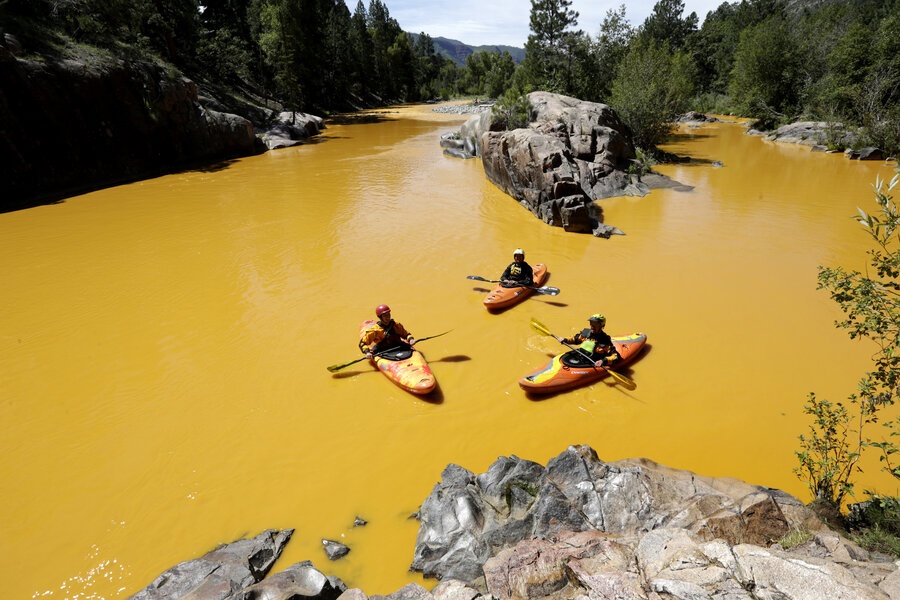Are regulators doing enough to prevent another mine waste disaster?
Loading...
The environmental disaster at Gold King Mine in Colorado may have occurred a year ago, but New Mexico's top prosecutor says little progress has been made in addressing the issue since then.
"I am disappointed by the continued unwillingness to respond to the New Mexico Environment Department's numerous attempts to resolve this matter diplomatically and outside of court," New Mexico Attorney General Hector Balderas said in a statement. "The safe and peaceful livelihood of our citizens should override any political or scientific indifferences that we face."
Mr. Balderas wrote to both the head of the Environmental Protection Agency and officials in Colorado, alerting them that New Mexico is considering suing the agency, the state of Colorado, and the two mining companies involved in the disaster.
An EPA spokeswoman told the Associated Press that the agency takes responsibility for the cleanup of the spill. The Gold King Mine disaster occurred when a cleanup crew, led by members of the EPA, triggered a wastewater spill of over 3 million gallons that eventually fouled the waters of rivers in three Western states. Two Native American communities, the Navajo and Ute tribes, also remain negatively affected by the environmental damage from the spill.
A federal investigation last October faulted the EPA for its role in the spill, finding that the way the EPA conducted its water level tests in the mine contributed directly to the blowout in the mine. The report, by the US Department of the Interior, attributed the spill to the EPA's failure to properly assess the amount of wastewater.
In April, the EPA announced that it would reimburse the affected states, tribes, and local governments about $1 million for costs associated with cleaning up the spill. Although the EPA says water quality returned to pre-spill levels almost immediately after the incident, Balderas and other officials are still concerned about toxic chemicals lingering in the soil or collecting in runoff from rain and snow.
Balderas described the spill as a catastrophe in his letters.
"Following this tragic incident, our greatest concern should be ensuring that the people and the lands we live on are free from hazardous materials," he wrote.
This report includes material from the Associated Press.






